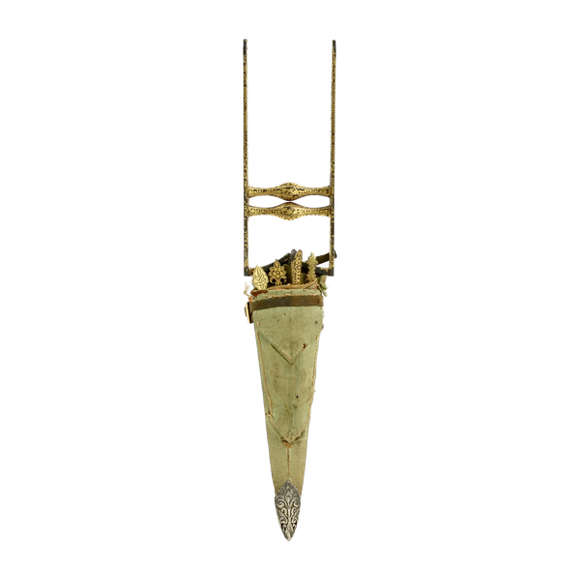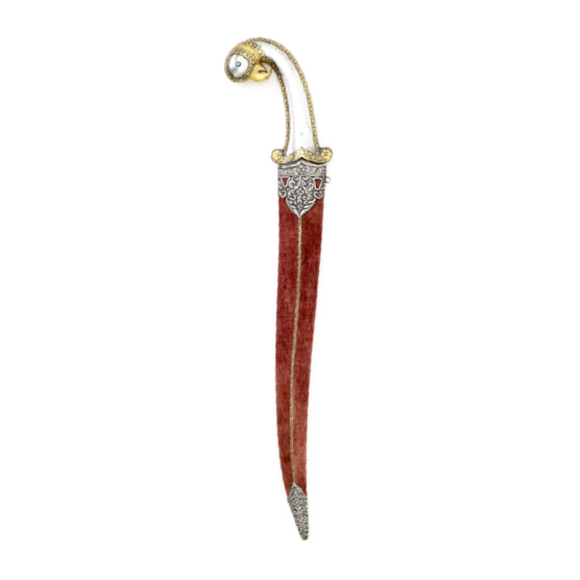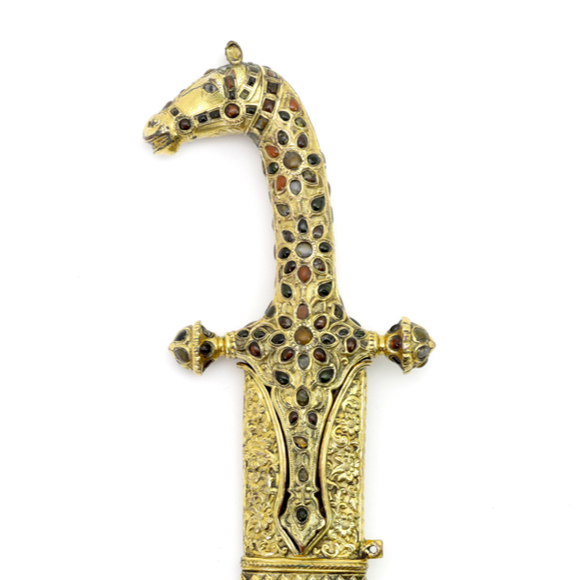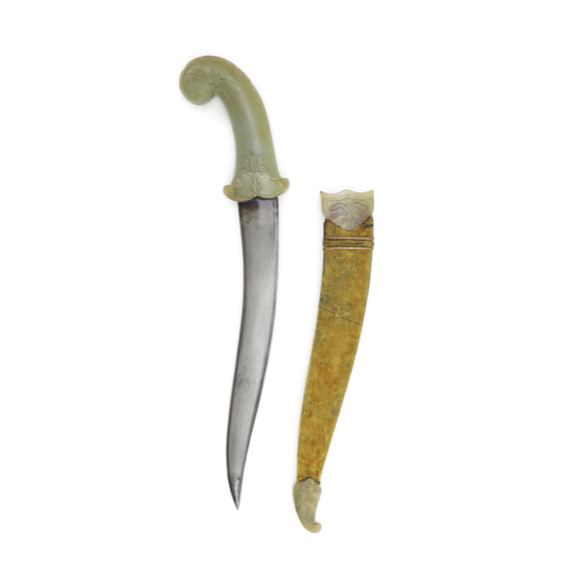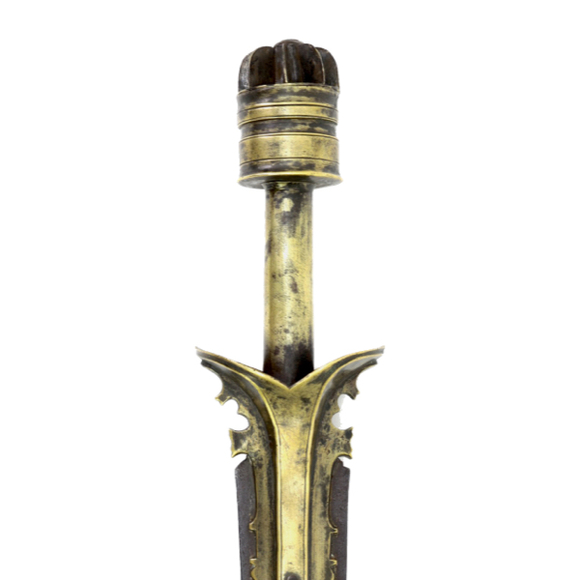With a fine wootz blade with a pronounced center ridge.

127 cm
94 cm
Ahead of langet 3.5 mm
Middle 3 mm
5 cm from tip 1.5 mm
Base 41 mm
Ahead of langet 37 mm
Middle 30.5 mm
5 cm from tip 22 mm
1623 grams
3.5 cm from hilt
Iron, steel, silver
Blade; Solingen, Germany
Gauntlet; India
Blade 17th century
Hilt 17th to early 18th century
United Kingdom antique art market
Introduction
Patá probably comes from the word patta (पत्ता) meaning "leaf".
The patá is a large gauntlet sword, sometimes found with European import blades like this one. It is strongly associated with the Maratha who call it dandpatta.1 The Maratha empire (1674-1818) rose to prominence in the 17th century and defeated the long-established Mughal empire in the North. Its use was however not confined to the Marathas, and is described in use by many people of India:
"The huge gauntlet swords -Patta- used by the Nagas or military monks of Jeypore,
and by Mahrattas, have large steel gauntlets." 2
-Thomas Holbein Hendley, 1892
"Used by the Sikhs in their sword play, and by the Mohamedans at the festival of the Mohurrum. Also by Mahrattas of Southern India." 3
-Lord Egerton of Tatton, 1880
For more information on patá, see my glossary article: Patá.
Notes to introduction
1. P. S. Rawson; The Indian Sword, Herbert Jenkins LTD, London, 1968. Page 46.
2. Thomas Holbein Hendley; Damascening on Steel or Iron as Practised in India, W. Griggs & Son Ltd, Elm House, Hanover Street, London. 1892. Page 10.
3. Lord Egerton of Tatton; Indian and Oriental Arms and Armour. Dover Publications; Revised edition, 2002. Page 110.
This example
A large patá with a European riding sword blade, made around the mid 17th century. The large, flexible blade of lenticular cross section has a wide, single center groove.
Markings
It is marked:
"ABRAHAM STAMM"
and
"SOLINGEN"
Because the langet covers a portion of the blade, only the last three letters of Abraham are visible. There are two extra holes in the blade, plugged with silver, that suggest it was mounted earlier on a different patá.
A rather similar patá, also with Abraham Stamm Solingen blade, is described and depicted by Lord Baden Powell.

European import blades were prized possessions, primarily in the 17th century because they offered a kind of lightness and flexibility that could not yet be achieved with local steel. Wootz for example is an excellent steel that can take an impressive edge but it was brittle compared to the better European swords, and therefore unsuited for very long and thin straightswords. Indian sword makers would catch up soon though, and by the next century they could themselves make such blades as well, of forge folded steel.
Hilt
The blade is held between two thick langets with pronounced center ridge for added rigidity, riveted in place with three rivets.
The steel gauntlet is polished bright on the outside and with patination and hammer marks on the inside. The edges are strengthened with a band of metal with decorative piercing and engraving. Although some of the details are worn, you can still see it's a quality piece with attention to details like a raised rib at the edge of the gauntlet.
The surface shows some hints of a peculiar pattern in the steel, perhaps hinting towards pattern welding.
The handle bar is riveted in place with two rivets, each with a flower-shaped washer. A sturdy chain secures the lower arm.
Conclusion
A good example of an earlier fighting patá of the 17th to early 18th century with a European, Solingen-made blade that was highly prized in India at the time.
Notes
1. Lord Baden Powell; Indian Arms and Armour. Published in The Journal of Indian Art Vol IV. W. Griggs & Sons, London. 1896. Pages 103-127.















The style typical of Kutch, the execution far above what is normally seen on work from that area.
Nice and complete with opaque green hilt and scabbard mounts.
An early fighting piece with strong reinforcing langet and broad, cobra shaped tip.

